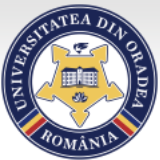Detailed introduction of the University of Oradea:
Introduction and Overview
The University of Oradea is a public university in the city of Oradea in northwestern Romania. It offers a wide range of undergraduate, master's and doctoral programs covering a wide range of subject areas and is one of the important higher education institutions in the region.
History and Founding Time
The history of the university dates back to 1780, when the "Higher Philosophical Educational Institution" was established in Oradea. In 1788, it became a law school, the oldest college in Romania and even in Eastern Europe at large.
In 1934, the law school was transferred to Cluj. On October 1, 1963, a three-year Teacher Training College was established in Oradea by order of the Ministry of Education.
In May 1990, the Romanian government issued a decree to establish the Technical University based on some of Oradea's prestigious academic traditions, which was later renamed the University of Oradea.
School Strength
Faculty: 935 teaching staff.
Student size: 14,133 students in 2015-2016, more than 19,000 students including all forms of learning.
Research achievements: Actively carry out scientific research activities, with 27 institutionally certified research centers, have achieved certain scientific research results in many fields, and have enhanced its influence in the international academic community through international cooperation projects.
Nature of the institution
Public university.
Educational philosophy
Aims to provide high-quality education and research, promote the social, professional and intellectual development of individuals, while contributing to the social and cultural development of Oradea, and is committed to attracting students from all over the world, positioning the school among the best educational institutions in the country and Europe, and conveying the importance of academic education and scientific research to the wider community.
Key laboratories and disciplines
Key laboratories: Equipped with corresponding advanced laboratories in various disciplines, such as the medical laboratory of the School of Medicine, the physical laboratory of the School of Science, the chemical laboratory, etc., provide good experimental conditions for teaching and scientific research.
Advantageous disciplines: Medicine, law, electrical engineering and information technology, civil engineering and architecture and other disciplines have strong strengths. The curriculum of the Medical School was developed in cooperation with American universities such as Harvard University; the Law School has a high reputation in the field of legal education in Romania; the School of Electrical Engineering and Information Technology has outstanding teaching and research in electronic technology, communication engineering, etc.; the School of Civil Engineering and Architecture has excellent teachers and teaching resources in architectural design, structural engineering, etc.
Faculty
It has 15 colleges, namely the School of Arts, the School of Civil Engineering and Architecture, the School of Law, the School of Geography, Tourism and Sports, the School of Electrical Engineering and Information Technology, the School of Power Engineering and Industrial Management, the School of Engineering and Technology Management, the School of History, International Relations, Politics and Mass Communication, the School of Arts, the School of Medicine, the School of Environmental Protection, the School of Science, the School of Economics, the School of Social Sciences and Humanities, and the School of Theology.
Ranking
Ranked 1401+ in the QS World University Rankings and 211-220 in the QS Emerging Europe and Central Asia.
Fees
Tuition fees at public universities in Romania are relatively affordable. International student tuition fees are usually around 2000-3000 euros per year, but the specific fees may vary depending on the major and degree type.
Campus Environment
Campus Facilities: It has modern teaching facilities, including multiple lecture halls, classrooms, seminar rooms and laboratories that can accommodate hundreds of people. The university library has a rich collection of more than 305,000 books, magazines, etc., and professional databases can be accessed online. In addition, there are sports facilities and student dormitories.
Academic Atmosphere: It has established international relations with 352 institutions from 39 countries, actively participated in international exchanges and cooperation, created an international academic atmosphere, and provided students with broad international exchanges and learning opportunities.
Cultural Activities: The school will hold various cultural activities, academic lectures, sports events, etc. to enrich students' extracurricular life and promote their all-round development. At the same time, the school is located in the city of Oradea, and students can enjoy the city's rich cultural and entertainment resources.
-

Grigore T. Popa University of Medicine and Pharmacy
-
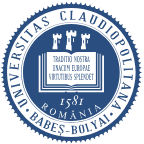
Babes-Bolyai University
-
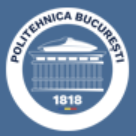
Politehnica University of Bucharest
-
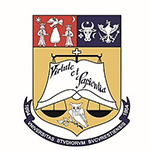
University of Bucharest
-
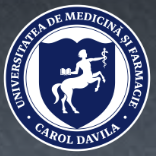
Carol Davila University of Medicine and Pharmacy
-
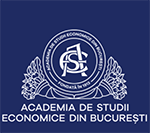
Bucharest Academy of Economic Studies
-

Technical University of Cluj-Napoca
-

1st December 1918 University of Alba Iulia
-

West University of Timisoara
-
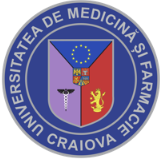
University of Medicine and Pharmacy of Craiova
-

Mesoamerican University
-

Istmo University
-

Mariano Galvez University of Guatemala
-

Regional University of Guatemala
-

Galileo University
-

Francisco Marroquín University
-

Rafael Landívar University
-

University of the Valley of Guatemala
-

University of San Carlos of Guatemala
-

Technological Institute of Tlaxcala Plateau
-

Golfo University
-

Technological University of South Sonora
-

Technological University of Huejotzingo
-

Tizimín Institute of Technology
-

Chilpancingo Institute of Technology

